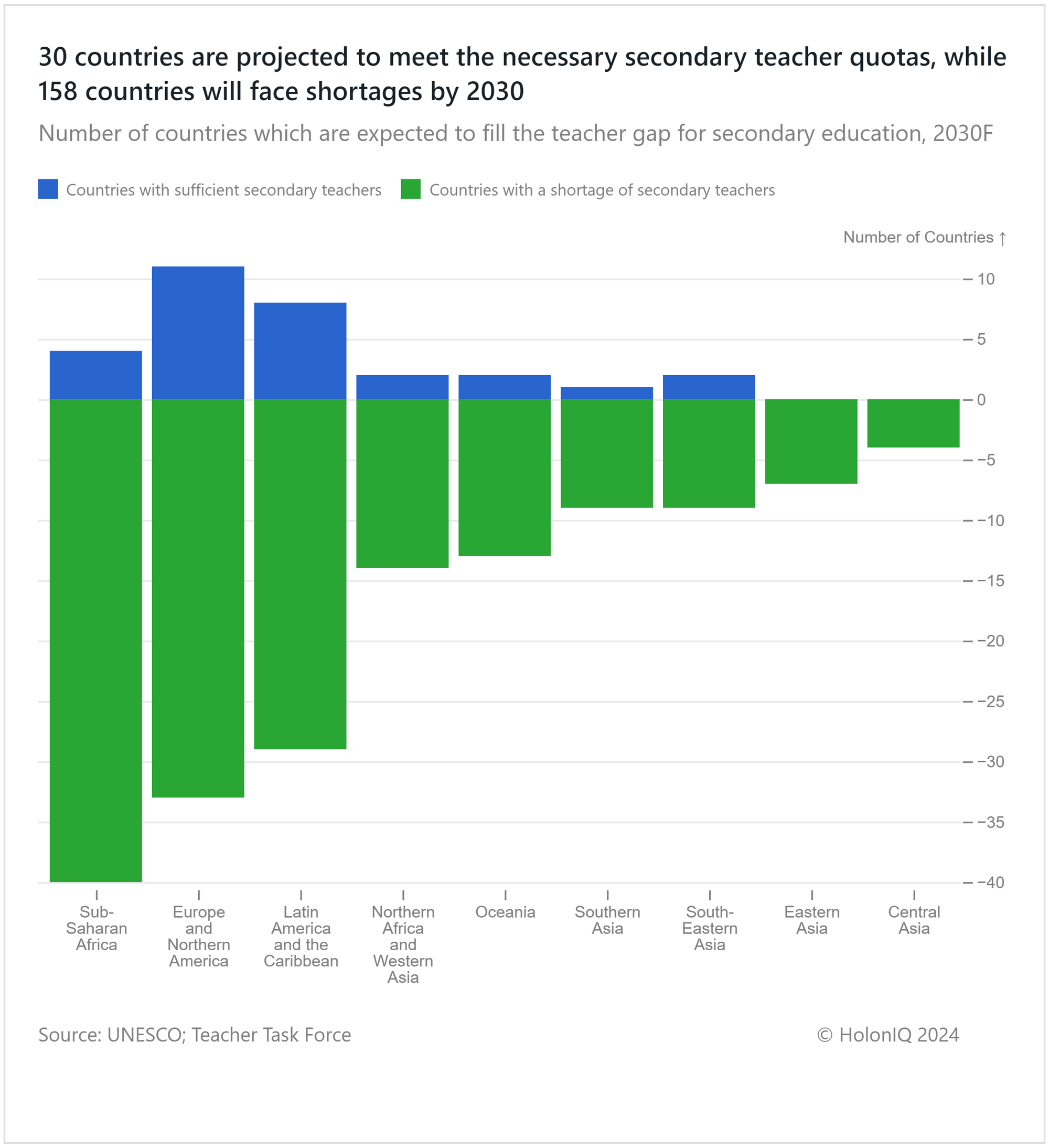🪓 22.7M Hectare Deforestation. 158 Country Teacher Shortage. Robotic Surgeries.
Chart of the Day #77 looks at Teacher Shortages, Tree Cover Loss and, Robotic Surgeries.
Xin chào 👋
A remote robotic-assisted surgery system, dubbed the spaceMIRA, underwent testing aboard the International Space Station (ISS). It was transported to the ISS via the SpaceX Falcon 9 rocket from Cape Canaveral in January, with remote tests being conducted under zero gravity on simulated tissue from 250 miles below the ISS orbit. The UK and Europe are addressing their teacher shortage by digitizing teachers into avatars, offering interactive homework, and utilizing smart analytics tools.
Today's Topics
📚 Teacher Shortage. 158 countries to face teacher shortages in secondary education by 2030
🌳 Tree Cover Loss. 22.7M hectares of tree cover lost in 2022
🧑⚕️ Robotic Surgeries. 38% gap in robotic and laparoscopic surgery costs
For unlimited access to over one million charts, request a demo.
📚 158 Countries To Face Teacher Shortages in Secondary Education by 2030

The global teacher shortage is an issue affecting education systems globally, with an estimated 44 million additional teachers needed by 2030 to achieve global education goals and ensure quality learning for all. This shortage is particularly acute in Sub-Saharan Africa; out of the 158 countries that are projected to have deficits in teachers, 40 are located in this region.
The shortage of secondary teachers has significant implications, leading to larger class sizes, overburdened educators, educational disparities, and financial strain on school systems, ultimately impacting educational quality and access. Croatia, France, Hungary, and Italy have recently increased teacher salaries and invested in teaching training, as a survey in 2018 revealed that less than half of teachers were satisfied with their pay. By reducing administrative tasks, improving working conditions, and raising the status of the teaching profession, countries aim to retain current educators and attract new talent.
🌳 22.7M Hectares of Tree Cover Lost in 2022

Global tree cover loss was primarily driven by various factors, notably commercial forestry, which accounted for a significant portion of 6.7M hectares lost in 2022. The practice of commercial forestry, aimed at meeting the demand for wood and paper products, often disrupts ecosystems and contributes to widespread deforestation. Shifting agriculture, characterized by clearing land for cultivation and then abandoning it after a few years, further exacerbates tree cover loss as fertile areas are continuously sought.
The escalation of wildfires, attributed to climate change, also played a significant role in the depletion of tree cover globally, with over 22% of the tree cover loss being due to wildfires. Commodity-driven deforestation linked to mining and farming industries, where land is cleared for commodities ranging from cattle ranching to palm oil, and urbanization, driven by population growth, have also further intensified the pressure on global tree cover as consumption increases.
🦾 38% Gap in Robotic and Laparoscopic Surgery Costs
Robotic surgeries are becoming increasingly popular in various surgical fields. While gastrectomies, the most expensive among the above procedures, show only a 2% difference in cost between robotic and laparoscopic methods, other surgeries exhibit wider cost disparities. A robotic hysterectomy costs 16% more, left colectomy and VHR 20% more, and a cholecystectomy nearly 38% more. Opting for a robotic surgery provides benefits like shorter recovery times and fewer complications due to higher precision and less invasiveness. However, the higher costs might only be attractive to high-income patients where benefits outweigh costs.
The use of medical robots significantly reduces human errors in a surgical procedure. In 2023, a collaborative preclinical trial involving clinician-scientists from Japan and Singapore assessed the viability of robotic telesurgery. The trial, conducted by a Singaporean surgical team at Singapore’s National University Hospital, remotely performed a gastrectomy at Nagoya, Japan, spanning a distance of 5,000km. Initial findings indicated minimal time lag and transmission delay, demonstrating the potential for cross-border and long-distance robotic tele-surgeries.
Like getting this newsletter? For unlimited access to over one million charts, request a demo.
Thank you for reading. Have a great week ahead!
Have some feedback or want to sponsor this newsletter? Let us know at hello@holoniq.com
